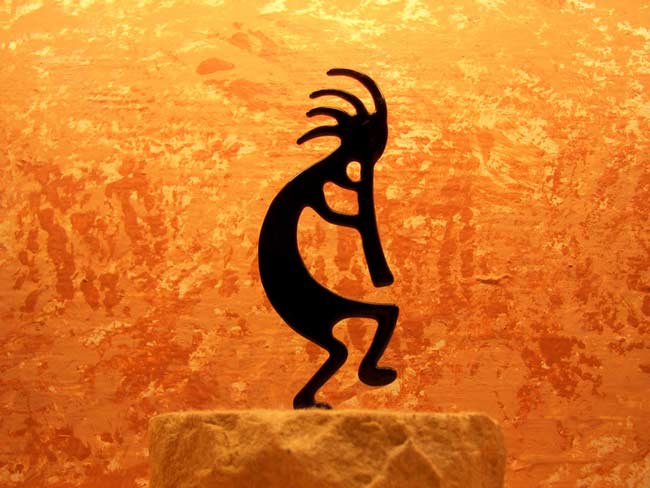Cave Men Loved to Sing

Ancient hunters painted the sections of their cave dwellings where singing, humming and music sounded best, a new study suggests.
Analyzing the famous, ochre-splashed cave walls of France, the most densely painted areas were also those with the best acoustics, the scientists found. Humming into some bends in the wall even produced sounds mimicking the animals painted there.
The Upper Paleolithic people responsible for the paintings had likely fine-tuned their hearing to recognize the sound qualities in certain parts of the cave and chose to do their artwork there as a kind of landmark, perhaps as part of a singing ritual, said researcher Iegor Reznikoff, a specialist in ancient music at the University of Paris X in Nanterre.
Reznikoff will present his findings at the upcoming Acoustical Society of America meeting in Paris, France.
Cave dwellers used echolocation
People who lived in Europe during the Upper Paleolithic — from 10,000 to 40,000 years ago — spent a lot of time in caves, often living there or at least camping out for short periods. "They were hunters in cold conditions," Reznikoff told LiveScience.
With only dull light available from a torch, which couldn't be carried into very narrow passages, the ancient hunters had to use their voices like sonar to explore the crooks and crannies of a newfound cave, Reznikoff explained.
Get the world’s most fascinating discoveries delivered straight to your inbox.
"When acting in a cave in conditions similar to prehistoric ones … the surroundings a few meters ahead are almost completely dark," he said, adding that "since sound reaches much farther than reduced light, especially in irregular surroundings, the only possibility and security is to explore the cave with the voice and its echoing effects."
When they vacated their caves, many Paleolithic people left behind vast murals depicting bison, mammoth, ibex and other local fauna, as well as splotches of color — usually red — along narrow hallways and corners. A famous example is the network of caves at Lascaux, France, which contains several thousand figures painted across its walls.
Trained vocalists tested cave pitch
The cave paintings were part of a ritual system — like early religious beliefs — practiced by Paleolithic humans that likely also included singing and music, Reznikoff said, noting that bone whistles and flutes have been found inside many of the caves. What archeologists didn't know is whether the paintings and music were connected.
Suspecting a possible link, Reznikoff and a team used voice resonance to study the acoustics in caves across France (some work was done in past years and combined with the latest findings).
A trained vocalist was sent through the caves testing different sounds and pitches in various locations. Spots of maximum resonance, or places where the voice was most amplified and clear, were noted in each section and later laid over a map of the cave drawings. The vast majority of the paintings, up to 90 percent in some cases, were located directly at, or very near, the spots where the acoustics were the absolute best, they found.
Single red spots were even discovered in the most resonant areas of tiny tunnels where people could only have crawled in the dark, suggesting that the paintings were not just coincidentally located in the biggest, best open spaces where the sound was also rich, Reznikoff said. Some reverberations produced in the caves' resonant spots also sounded very similar to the animals painted on the walls nearby, he noted.
Sights and sounds come together
Because Paleolithic humans had a deep connection with the melodic properties that helped them navigate in a cave, they likely celebrated the unique acoustics by singing in conjunction with their painting sessions.
"Why would the Paleolithic tribes choose preferably resonant locations for painting," he said, "if it were not for making sounds and singing in some kind of ritual celebrations related with the pictures?"
The phenomenon isn't limited to the interior of caves, etiher. Studies have been done at some outdoor Paleolithic sites in France and Finland, and the sound-painting connection is also strong, Reznikoff said.
At a site called the Lac des Merveilles in Provence, there is a large flat rock archaeologists have labeled the Altar Stone, covered with more than a thousand pictures.
"There by the lake, the echo answers whole melodies and it is a pleasure to sing or play at this place; one can easily imagine celebrations using voice and horns," said Reznikoff.



